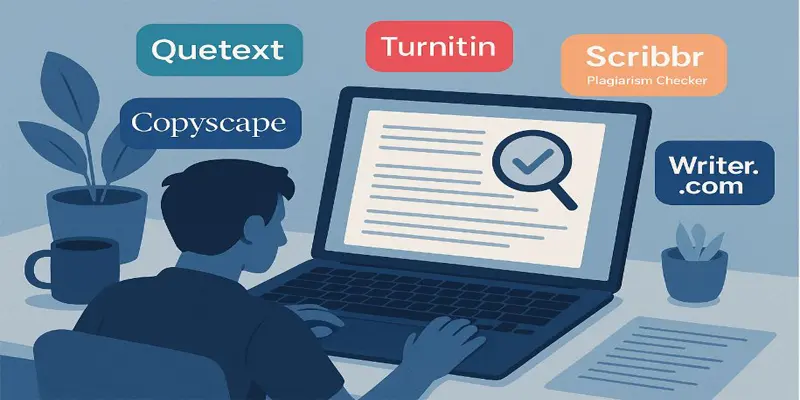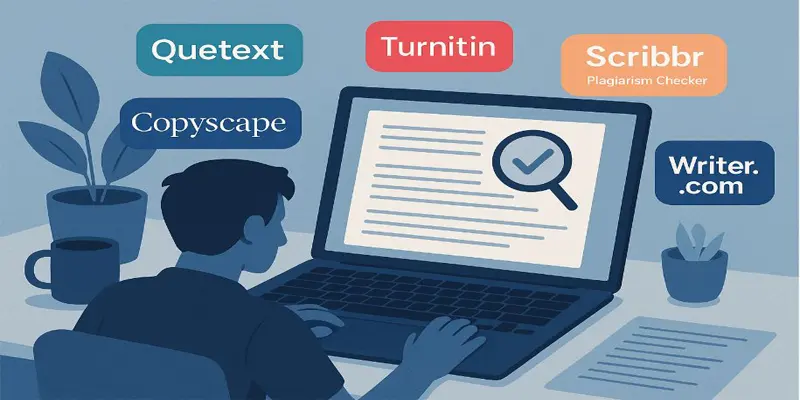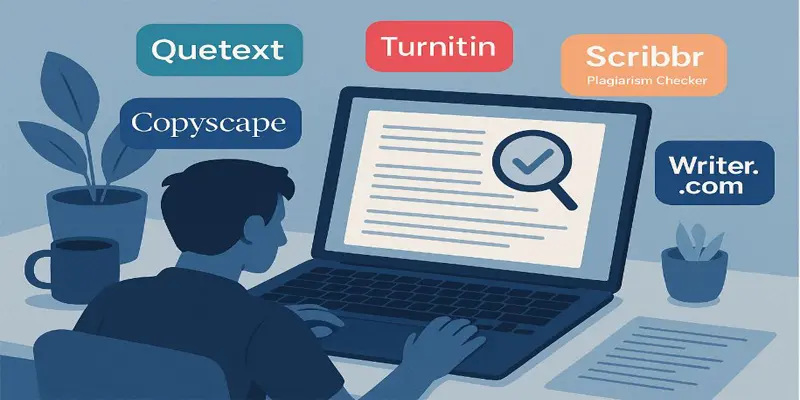AI Tools for Brand Strategy: A Smart Comparison for Future-Proof Brands
In today’s hyper-digital world, brand strategy isn’t just about creativity and gut instinct — it’s about data, insight, and adaptability. That’s where AI tools come in. Whether you're managing a growing DTC brand or running a large enterprise portfolio, AI can help align your vision with measurable outcomes.
This comparison guide breaks down the top AI tools for brand strategy, so you can build a smart, scalable stack that delivers real results — with clarity, not clutter.
Why AI Tools Are Redefining Brand Strategy
AI isn’t replacing brand strategists — it’s giving them sharper tools. From social sentiment to cross-channel performance, AI makes it possible to monitor, pivot, and fine-tune brand direction in real time.
From gut instinct to data-driven branding
Brand positioning used to be a “feel.” Now it’s a metric. AI helps validate brand choices using real feedback from real audiences — faster than traditional research ever could.
AI’s role in unifying brand metrics and customer perception
AI tools gather scattered insights — from CRM clicks to social mentions — and pull them into one consistent brand narrative. That’s essential for staying relevant across touchpoints.
Major Advantages of Leveraging AI for Building a Brand
- Faster decision-making
- Clearer audience segmentation
- Early detection of brand drift or dilution
Brands that adopt AI early tend to adapt better — and resonate longer.

Quantive Results (Gtmhub) – Track Goals and Brand KPIs
Quantive Results (formerly Gtmhub) helps brands operationalize strategy through measurable objectives and real-time alignment.
Features that support brand goal-setting and OKRs
Quantive enables you to set OKRs tied to brand outcomes — from awareness scores to engagement metrics. You can tag, track, and benchmark across timeframes.
Integration with marketing tools and dashboards
Easily connects with Salesforce, HubSpot, Google Analytics, and Tableau for enhanced workflow.
Gives CMOs and teams a single source of truth.
Who it’s best for: enterprise brand teams and strategists
Ideal for brand strategists managing multiple departments or markets .also fits larger orgs building a data-informed brand maturity model.
Pros:
- Strong OKR framework
- Customizable KPI dashboards
Cons:
- Slight learning curve for small teams
- Better suited to mature data environments
Brandwatch AI – Real-Time Brand Sentiment Monitoring
Brandwatch AI goes beyond basic listening. It gives brands a pulse check on how they’re being perceived, hour by hour.
How Brandwatch AI captures audience sentiment? Its machine learning models scan global online conversations — categorizing tone, emotion, and topic clusters.
Social listening vs traditional monitoring
Social listening tells you what people are saying — AI tells you how they feel. It’s the difference between volume and insight.
Ideal use-case: PR teams, social managers, and reputation control
When timing and tone matter (like product launches or crises), Brandwatch delivers fast, contextual feedback.
Pros:
- High sentiment accuracy
- Competitive benchmarking
Cons:
- Premium price point
- May require onboarding for non-analysts

Crimson Hexagon – AI for Audience Insight and Trend Forecasting
Crimson Hexagon excels at uncovering underlying trends in audience behavior, conversations, and brand expectations.
What makes it different: predictive analytics + brand clusters
Unlike static dashboards, Crimson shows how audience segments shift — helping brands preempt change, not just react.
Visualization tools for strategic decision-making
Dashboards are designed for senior decision-makers — intuitive, visual, and easy to share across departments.
Ideal for: brands exploring global markets or niche segments
Whether you're launching in new markets or re-segmenting existing ones, Crimson excels at trend-surfaced storytelling.
Pros:
- Robust clustering and foresight tools
- Powerful for market expansion
Cons:
- Not ideal for tactical content planning
- Higher pricing tier
Narrative BI – Turn Brand Metrics into Strategic Stories
Narrative BI simplifies complex data, transforming it into clear, actionable insights for brand strategy—acting as a bridge between analytics and decision-making.
From dashboards to digestible insights
Rather than raw charts, you get weekly updates in plain English: “Your brand mentions rose 28% due to X campaign.”
Real-time brand alerts and weekly reports
Get pinged when brand KPIs shift. Great for agile teams that don’t live inside spreadsheets.
H3 5.3: Best fit: startup teams and DTC brands without data analysts
Narrative BI works best for fast-growing brands that need answers without hiring a data scientist.
Pros:
- User-friendly language
- Lightweight setup
Cons:
- Less depth than enterprise platforms
- Limited customization

Flick AI Analytics – Crafting Content Strategies Informed by Real Audience Insights
Flick’s AI is purpose-built for content-first brands looking to align messaging with what their audience actually responds to.
Inside Flick: Measuring Content Impact Through Audience Engagement Tracks performance by post type, hashtag, timing, and format — turning content calendars into strategy engines.
AI keyword suggestions and performance tracking
Suggests keywords, formats, and even voice tone tweaks based on engagement trends.
Great for: content-first brands and social teams
If your brand lives on Instagram, TikTok, or YouTube — Flick offers plug-and-play strategy without the overhead.
Pros:
- Great for creators and marketers
- Fast insight loop
Cons:
- Best for social channels only
- Limited export/reporting formats
Comparison Table: Top AI Tools for Brand Strategy
| Tool | Best For | Key Feature | Ease of Use | Integrations | Price Range | Quantive Results | Enterprise brand teams | OKR alignment + performance tracking | Medium | 150+ integrations | $$$
| Brandwatch AI | Sentiment + reputation teams | Real-time social listening | High | Social + CRM tools | $$$$
| Crimson Hexagon | Strategic insight + trends | Predictive analytics + clusters | Medium | Custom dashboards | $$$$
| Narrative BI | Startups + non-technical teams | Digestible insights from KPIs | Very High | Google, HubSpot | $$
| Flick AI Analytics | Social content teams | Real-time content + hashtag data | High | Instagram, TikTok | $–$$
How to Choose the Right AI Tool for Your Brand Strategy
Choosing an AI tool should depend on your team size, tech stack, and strategic intent — not just features.
Matching tools to brand maturity: startup vs enterprise
Startups → Narrative BI or Flick
Mid-size → Brandwatch or Crimson
Enterprise → Quantive for OKRs, Brandwatch for insight
Key integration points with CRMs, CMS, and ad platforms
Don’t pick in isolation — check CRM, email, CMS, and paid media compatibility first.
Combine tools for brand awareness, sentiment, and performance tracking
Success often comes from stacking the right tools: Flick supports creative work, Brandwatch captures audience sentiment, and Quantive keeps teams on track.
Final Verdict – Building a Brand Strategy Stack with AI
Every brand has different needs — but clarity, alignment, and flexibility are universal. The best AI tool for your team is the one that helps you track what matters and pivot when needed. Start lean by choosing the tool that directly addresses your biggest brand blind spot. As your needs evolve, scale your stack to include deeper analytics or cross-channel coordination. AI handles trend detection and feedback loops with precision, but the creative spark and strategic leadership remain uniquely human. The smartest approach? Let AI handle the speed and data synthesis—your team brings the insight and authenticity. Run a focused pilot with one tool, observe how it improves brand clarity and messaging, and let real-world performance guide what you adopt next.